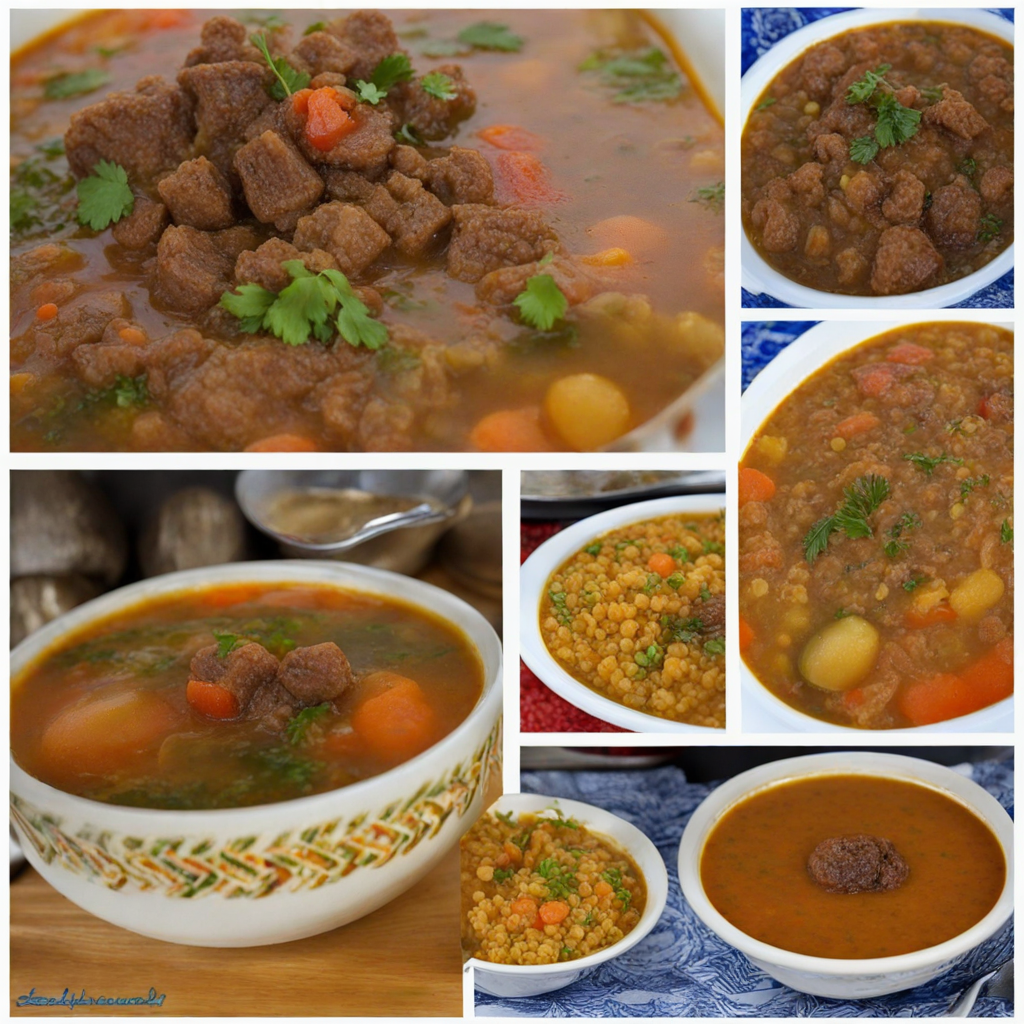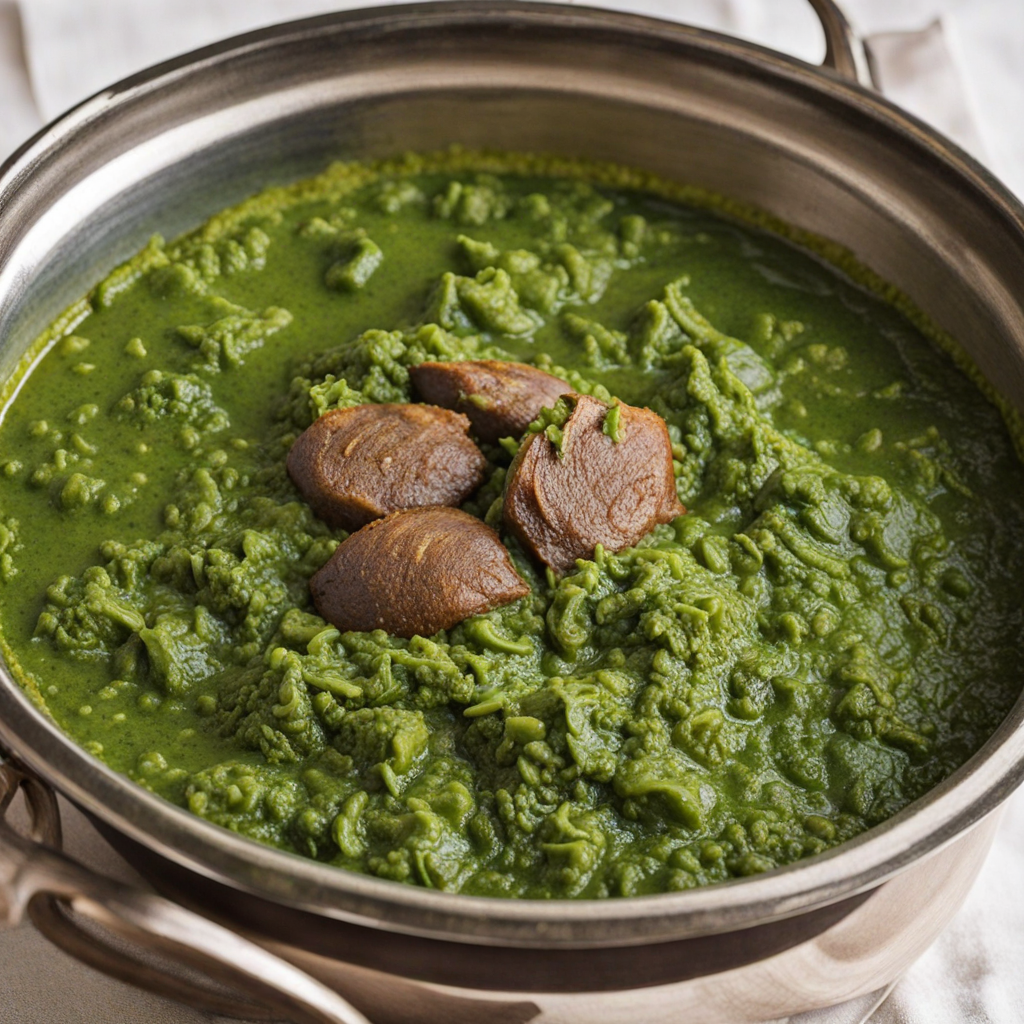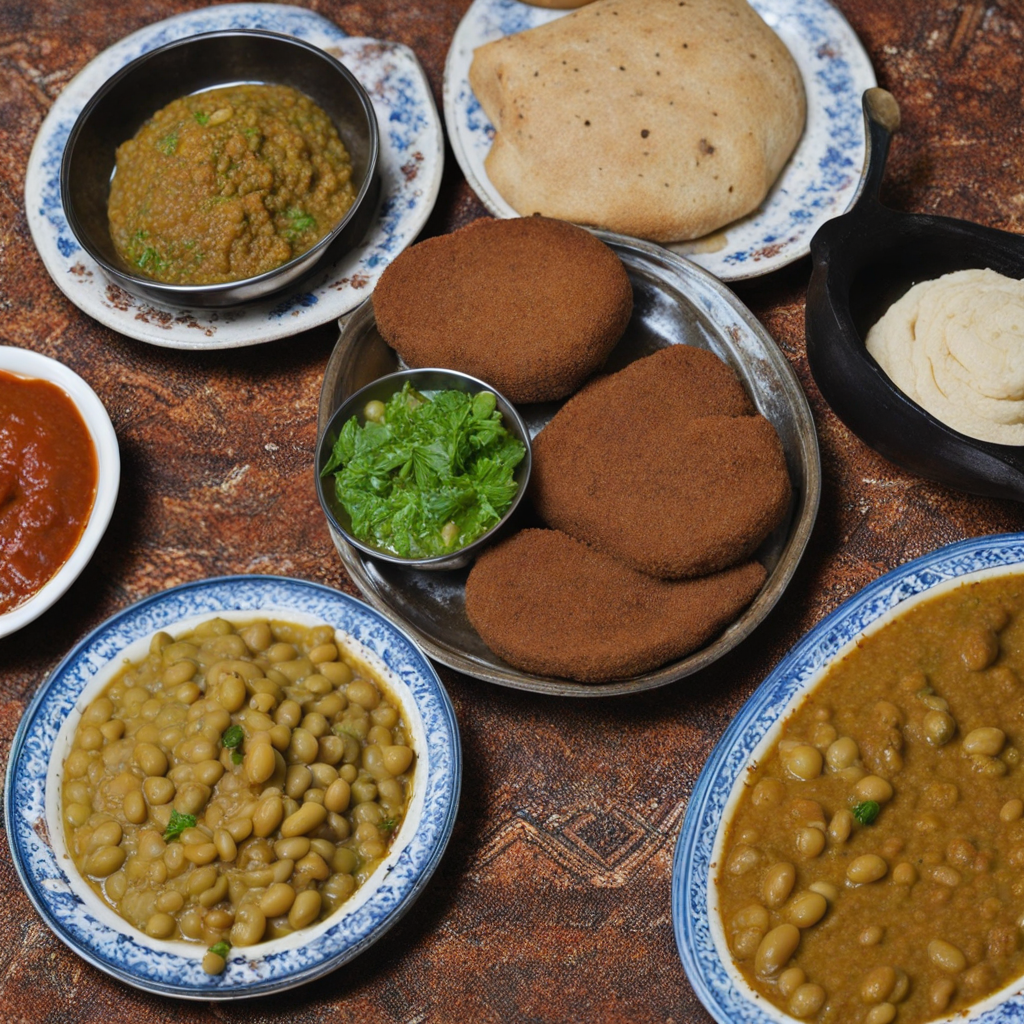Bride's Fingers
Bride's Fingers, known as "Asida" in Sudanese culture, is a unique and traditional dish that embodies the rich culinary heritage of Sudan. This delightful treat is made from a simple yet exquisite blend of wheat flour and water, which is skillfully mixed and cooked to create a smooth, elastic dough. The dough is then shaped into delicate finger-like rolls, resembling the graceful fingers of a bride. The texture is soft and slightly chewy, providing an inviting base for various accompanying flavors. One of the most appealing aspects of Bride's Fingers is its versatility. It is often served with a variety of savory sauces or stews, which can include spicy lentils, rich meat dishes, or vegetable-based concoctions. The combination of the tender dough with the robust flavors of the accompanying sauces creates a delightful contrast that tantalizes the palate. The dish is typically enjoyed communally, with diners pulling off pieces of the dough to dip into the flavorful stews, fostering a sense of togetherness and celebration. The experience of tasting Bride's Fingers is not just about the food but also about the cultural significance it holds. Traditionally served during weddings and special occasions, this dish symbolizes abundance and joy. Enjoying Bride's Fingers provides a glimpse into Sudanese hospitality, where sharing food is an integral part of social bonding and cultural expression. For those looking to explore new flavors, Bride's Fingers offers a memorable culinary adventure, blending simplicity with depth, and inviting you to savor the essence of Sudanese cuisine.
How It Became This Dish
The History of أصابع العروس (Asabi al-Arous): The Bride’s Fingers from Sudan Introduction In the rich tapestry of Sudanese cuisine, few dishes evoke the same sense of cultural pride and celebration as أصابع العروس, or Asabi al-Arous, which translates to "Bride’s Fingers." This delightful pastry, characterized by its intricate layers and sweet, nutty flavors, has a history rooted deeply in the traditions and customs of Sudan. From its origins to its significance in wedding celebrations, Asabi al-Arous is not just a dish but a symbol of love, festivity, and cultural identity. Origins The precise origins of Asabi al-Arous are difficult to trace, but it is believed to have emerged in the fertile regions of Sudan, particularly among communities that embraced both Arabic and African culinary traditions. The dish likely evolved from traditional sweets found in the Middle East, particularly those made with dough, nuts, and syrup. However, the unique Sudanese twist incorporates local ingredients and customs, reflecting the country’s diverse cultural landscape. Historically, Sudan has been a crossroads of civilizations, where various cultures—Arab, African, and indigenous—have mingled over centuries. This melting pot of influences contributed to the evolution of many dishes, including Asabi al-Arous. The use of ingredients like ground nuts, honey, and spices points to a culinary heritage that values both sweetness and complexity, often associated with festive occasions. Cultural Significance Asabi al-Arous holds a special place in Sudanese culture, particularly in the context of weddings. In Sudan, weddings are grand festivities that last for several days, involving elaborate rituals, music, dance, and, of course, an abundance of food. The presence of Asabi al-Arous at these celebrations is almost mandatory, symbolizing prosperity, fertility, and the sweetness of the couple’s union. The dish is traditionally served alongside other sweets and savory dishes, creating a lavish spread that showcases the host's generosity and hospitality. It is not merely a dessert; it is a centerpiece that embodies the joy of the occasion. The preparation of Asabi al-Arous often involves the participation of family and friends, further strengthening communal bonds and reinforcing the dish’s role in social cohesion. Moreover, the name "Bride’s Fingers" carries its own significance. It reflects the delicate and intricate nature of the pastry, likening it to the grace of a bride on her wedding day. The crafting of these pastries can be seen as a ritual in itself, where the act of preparing food becomes an expression of love and care, reflecting the values of family and tradition upheld in Sudanese society. Development Over Time As Sudan has evolved—politically, socially, and economically—so too has the preparation and consumption of Asabi al-Arous. In the past, the dish was often reserved for special occasions, particularly weddings and religious celebrations. Traditional recipes were passed down through generations, ensuring that the methods and flavors remained authentic. However, with globalization and changes in food availability, the ingredients and methods have transformed. In contemporary Sudan, Asabi al-Arous can be found in bakeries and restaurants, making it more accessible to everyday consumers. While the traditional recipes remain popular, there has been a rise in modern interpretations of the dish. Some variations incorporate different fillings, such as chocolate or fruit, appealing to newer generations who seek innovative flavors. The use of alternative sweeteners and gluten-free options has also emerged, catering to dietary restrictions while maintaining the essence of the dish. Despite these modern adaptations, the core of Asabi al-Arous remains unchanged. It is still a labor-intensive recipe, requiring skill and patience, which reinforces its status as a cherished delicacy. The process of making the pastry—from rolling out the dough to shaping it into delicate fingers—remains a labor of love, emblematic of the care that goes into preparing food for loved ones. Conclusion Asabi al-Arous is more than just a sweet treat; it is a culinary emblem of Sudan's rich cultural heritage, encapsulating the essence of love, celebration, and community. Its origins reflect a blend of traditions, while its significance in weddings highlights the importance of food in social and familial bonds. As the dish continues to evolve, it remains a testament to Sudan's resilience and adaptability in the face of change. In a world increasingly focused on fast food and convenience, the enduring legacy of Asabi al-Arous serves as a reminder of the value of tradition and the labor of love that goes into cooking. As Sudanese families gather to celebrate life’s milestones, the presence of Asabi al-Arous will undoubtedly continue to evoke memories of joy, connection, and the sweet spirit of togetherness that defines not only this dish but the essence of Sudanese culture itself.
You may like
Discover local flavors from Sudan







